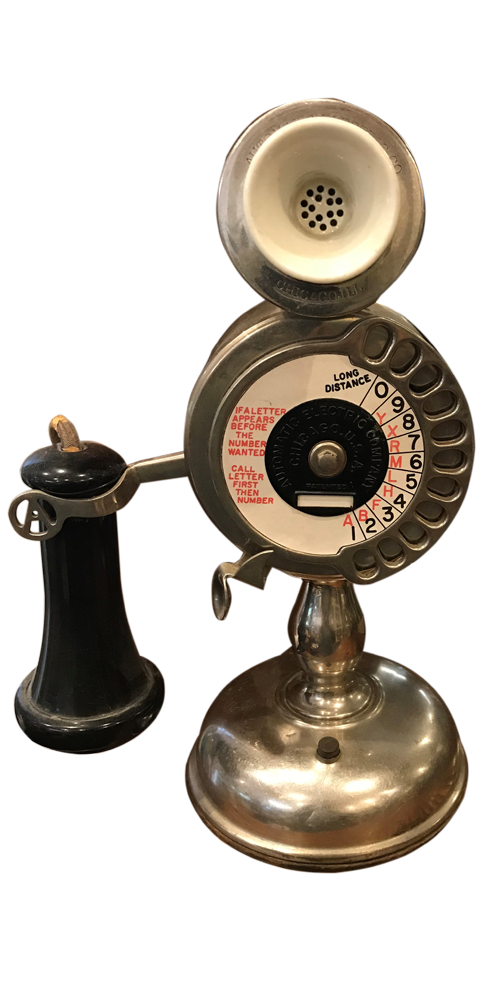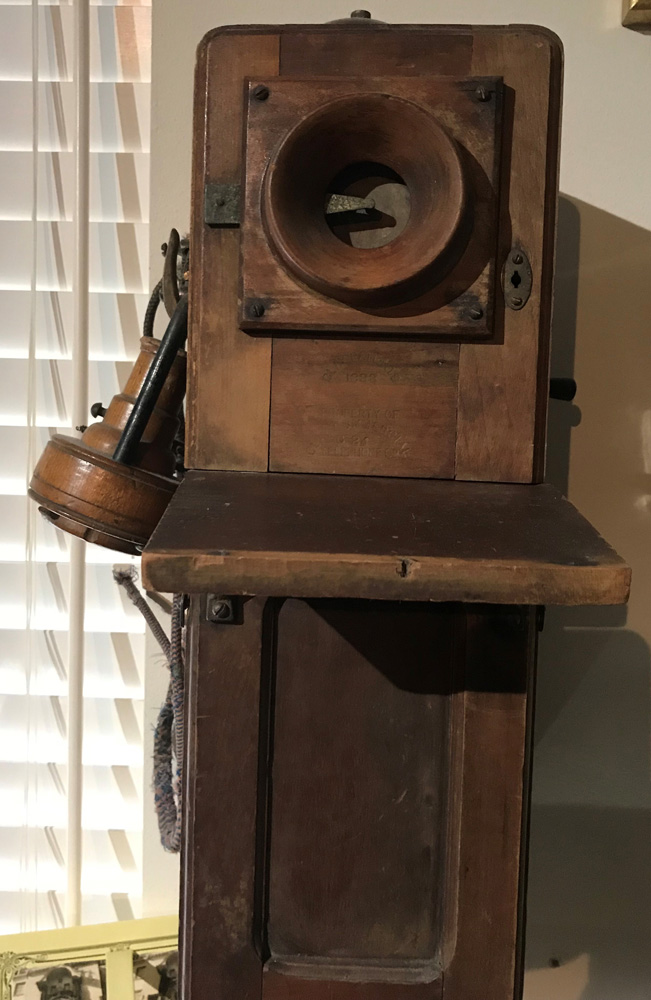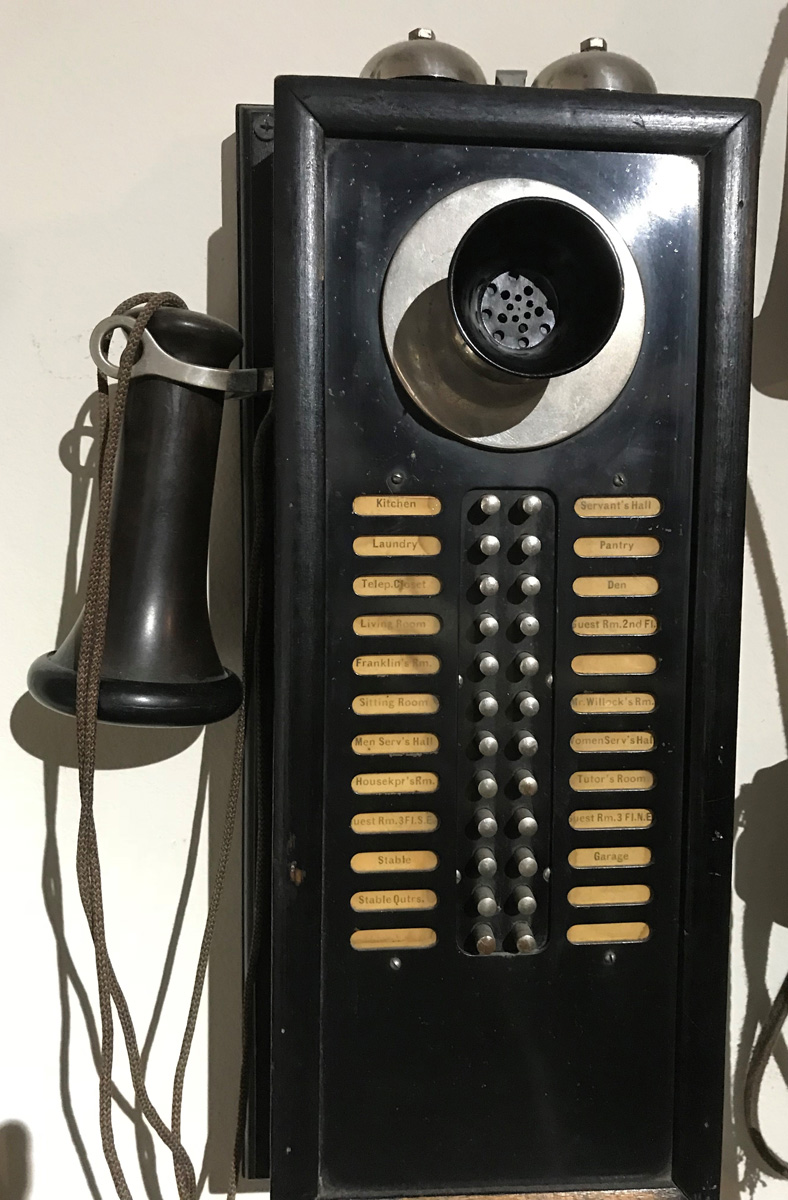Artist Highlight
Collecting Antique and Vintage Telephones
Telephones have been popular with collectors since Alexander Graham Bell asked Mr. Watson if he was in the next room. In fact, the most valuable patent ever issued, U.S. Patent # 174,465, was issued on March 7, 1876 to Bell for his invention of a device that produced clearly intelligible replication of the human voice.
The telephone was the first device in history that allowed people to talk directly with each other across large distances. Telephones rapidly became indispensable and today are among the most widely used small appliances. (Some might argue, especially those who are reading this article on their phones, that the telephone is the greatest invention of all time.)


 The most collectible phones were made by Western Electric, and other highly in-demand manufacturers include Automatic Electric, Kellogg Switchboard and Supply, and Stromberg Carlson. The Ericofon, or cobra phone—a one-piece plastic telephone made by the Ericsson Company of Sweden and the first commercial phone to incorporate dial and handset into a single unit—is considered one of the most significant industrial designs of the 20th century, because of its styling and influence on future telephone design.
If a telephone is old enough or unusual enough, chances are it is highly collectible.
The most collectible phones were made by Western Electric, and other highly in-demand manufacturers include Automatic Electric, Kellogg Switchboard and Supply, and Stromberg Carlson. The Ericofon, or cobra phone—a one-piece plastic telephone made by the Ericsson Company of Sweden and the first commercial phone to incorporate dial and handset into a single unit—is considered one of the most significant industrial designs of the 20th century, because of its styling and influence on future telephone design.
If a telephone is old enough or unusual enough, chances are it is highly collectible.

The first telephone (called a “telettrofono”) may have been invented by Antonio Meucci in Havana, Cuba in 1849, but the device was not patented. Another Italian, Innocenzo Manzetti, independently came up with the idea of a telephone as early as 1844, and he may have made one in 1864 as an augmentation to a musical machine he built in 1849.
The first public demonstration of a telephone occurred in 1860, in Frankfurt, Germany. In 1876, the phone made by Bell was shown at the Centennial Exhibition in Philadelphia, and the following year, the first private telephones were installed.
Telephones started to be collected soon after Bell patented them in 1876, and some of those early handmade wood telephones from American Bell and other early makers are among the most prized finds for collectors.
The first telephone (called a “telettrofono”) may have been invented by Antonio Meucci in Havana, Cuba in 1849, but the device was not patented. Another Italian, Innocenzo Manzetti, independently came up with the idea of a telephone as early as 1844, and he may have made one in 1864 as an augmentation to a musical machine he built in 1849.
The first public demonstration of a telephone occurred in 1860, in Frankfurt, Germany. In 1876, the phone made by Bell was shown at the Centennial Exhibition in Philadelphia, and the following year, the first private telephones were installed.
Telephones started to be collected soon after Bell patented them in 1876, and some of those early handmade wood telephones from American Bell and other early makers are among the most prized finds for collectors.


Telephones became more compact by the late 1930s, with the ringer and telephone in one piece. Until the Second World War, telephones were manufactured with all-metal insides and Bakelite exteriors, which made them both durable and heavy. Following World War II, plastic became common in manufacture and telephones became lighter and less durable.
Collectible antique and vintage telephones generally fall into three groups. Except for the earliest models, most wood wall phones, which were produced from 1876 through around 1945, have lost their appeal, since few collectors remember growing up with them. Candlestick phones, produced from the 1890s through the 1920s, remain in great demand, especially turn of the 20th Century nickel-plated models. Many collectors are also inspired by related items such as telephone signs and switchboards.

